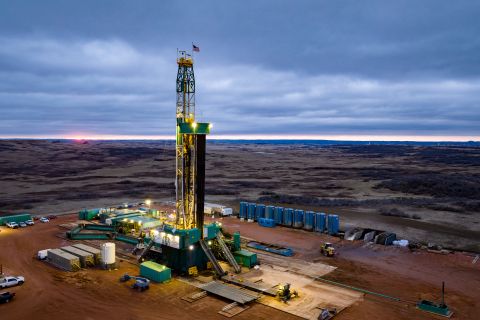The news that the Federal Energy Regulatory Commission had given a relatively positive environmental impact statement to the Bradwood LNG receiving terminal was still fresh in Houston when the counter-attack by opponents started. Bradwood is a $700-million project planned near Bradwood, Oregon, that is being developed by Houston-based NorthernStar Natural Gas. As originally proposed, the terminal would be located on 55 acres of a 420-acre site at Bradwood, located between Astoria and Clatskanie at about River Mile 38 on the Columbia River. The facility would be designed to have a peak sendout capacity of 1.3 billion cubic feet per day of natural gas and would be capable of continuous operation. The proposed project also includes a 34-mile long pipeline that would run from the site to Port Westward and then under the Columbia River into Washington. The FERC report said the terminal would have "limited adverse environmental impacts," but did list 110 recommendations for the company to follow to lessen these effects. Company officials have said West Coast needs the natural gas. A well-organized greens group has said they will not allow any LNG terminals to be built on the U.S. West Coast. But this time, they have a pretty big ally on their side -- Oregon Gov. Ted Kulongoski. The governor is attacking the project on several fronts, including one on states' rights vs. federal rights. Under federal law, FERC has the final siting say-so over land-based LNG terminals with very little recourse for the governors of those states where projects are planned. An LNG terminal offshore is under the direction of the U.S. Coast Guard and the U.S. Maritime Administration and governors have veto authority. In a recent letter to FERC, Kulgongoski said that a state-generated report shows that while Oregon will need increased supplies of natural gas to meet its needs, new supplies from the Rocky Mountains will be able to meet those demands. A report from the Oregon Department of Energy said that proposed pipelines in the Rocky Mountains will provide less expensive natural gas to the state and reduce carbon dioxide emissions that would produced by LNG terminals. "This report raises serious questions about whether LNG is the only source to serve an increased demand for natural gas and whether LNG terminals are in the public's best interest both economically and environmentally," Kulgongoski said. "Oregon has the right under federal law to have our concerns addressed before any final federal determination is completed." In its defense, Bradwood LNG said it has been working with Oregon on the siting of the terminal. Following passage of the federal Energy Policy Act of 2005, the Oregon attorney general told the company to apply directly to FERC, said Joe Desmond, senior vice president for external relations at Bradwood. "To ensure that local concerns would be addressed, we also signed a contract with the county committing that we would not appeal the county's conditions of approval to FERC," Desmond said. "To our knowledge, we are the only LNG terminal project in the U.S. that has ever proposed or agreed to such a contract." In its effort to prove to Oregon officials it can be a good neighbor, the company also submitted a plan by Bradwood to not only protect the environment, but help improve juvenile survival rates by upgrading the watershed of the Lower Columbia River. Don't think the FERC environmental impact statement is the last thing about Bradwood or any of the other projects planned for the West Coast. For many companies, it will be their summer of discontent. –John A. Sullivan, News Editor, Oil and Gas Investor, www.OilandGasInvestor.com, jsullivan@hartenergy.com
Recommended Reading
Smart Tech Moves to the Hazardous Frontlines of Drilling
2024-10-08 - In the quest for efficiency and safety, companies such as Caterpillar are harnessing smart technology on drilling rigs to create a suite of technology that can interface old and new equipment.
E&P Highlights: Nov. 4, 2024
2024-11-05 - Here’s a roundup of the latest E&P headlines, including a major development in Brazil coming online and a large contract in Saudi Arabia.
Integrating OCTG Management from Planning to Well
2024-12-10 - Tenaris’ Rig Direct provides improved collaboration and communication, and more uptime.
E&P Highlights: Dec. 9, 2024
2024-12-09 - Here’s a roundup of the latest E&P headlines, including a major gas discovery in Colombia and the creation of a new independent E&P.
Comstock: Monster Western Haynesville Wildcats Cost $30MM-plus
2024-10-31 - Comstock Resources is flowing back a 13th well currently in the play where the oldest has made 2.2 Bcf per 1,000 lateral feet to date in its first 29 months online.





